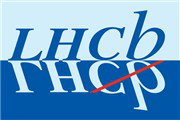Xabier Cid Vidal
(Instituto Galego de Física de Altas Enerxías)
17/02/2020, 15:00
Murilo Santana Rangel
(Federal University of of Rio de Janeiro (BR))
17/02/2020, 15:30
Miguel Ramos Pernas
(Universidade de Santiago de Compostela (ES))
17/02/2020, 16:00
Diego Martinez Santos
(Universidade de Santiago de Compostela (ES))
17/02/2020, 17:30
Carlos Vazquez Sierra
(Nikhef National institute for subatomic physics (NL)),
José Francisco Zurita
(KIT)
17/02/2020, 18:00
Federico Leo Redi
(EPFL - Ecole Polytechnique Federale Lausanne (CH))
18/02/2020, 10:00
Xabier Cid Vidal
(Instituto Galego de Física de Altas Enerxías)
18/02/2020, 10:30
Yuhsin Tsai
(University of Maryland)
18/02/2020, 12:00
Dr
Jan Hajer
(Université catholique de Louvain)
18/02/2020, 15:00
Susanne Westhoff
(Heidelberg University)
18/02/2020, 16:00
Miguel Escudero
(King's College London)
18/02/2020, 17:30
Martino Borsato
(Ruprecht Karls Universitaet Heidelberg (DE)),
Yuhsin Tsai
(University of Maryland)
18/02/2020, 18:00
Ruth Schäfer
(Universität Heidelberg)
19/02/2020, 10:30
Maria Ramos
(LIP)
19/02/2020, 11:00
Diogo Buarque Franzosi
(Chalmers University of Technology)
19/02/2020, 12:00
José Francisco Zurita
(KIT)
19/02/2020, 12:30
Miguel Escudero
(IFIC-University of Valencia)
In this talk based on ArXiv:1810.00880, I will detail what are the different approaches by which current collider experiments can test whether Baryogenesis and Dark Matter arise from CP violating B meson oscillations and their subsequent decays in the early Universe. These are:
1) Searches for heavy colored scalars (ATLAS, CMS).
2) Measurements of direct CPV in the B meson system (LHCb,...
